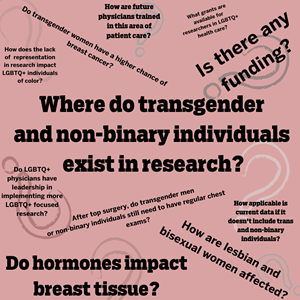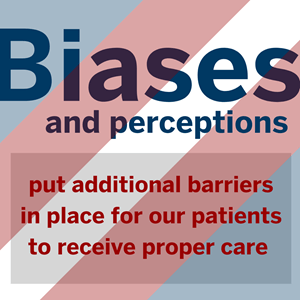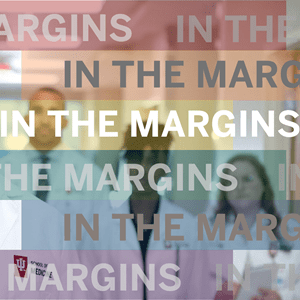Story series begins with look at disparities in breast cancer research
Pick up any book I own, and you’ll find countless notes in the margins of nearly every page. From cursive remarks stretching the length of chapters to brackets emphasizing paragraphs that made my heart skip a beat—my books are covered in moments captured in every color of ink, scribbled and emphasized. I picked up the habit during college when something in the text left me asking questions or I felt like something was missing. Those margins always offered a space for everything to exist.
As I brainstormed ideas to raise awareness for breast cancer this October, I began to do some research. A couple of years ago I came out as transgender1, and earlier this year I received top surgery2. With this experience, I was inspired to look at breast cancer through a new lens. I searched the web, scrolling through countless pages that focused on the disease from other institutions and hospitals.
After a handful of clicks, I quickly noticed a severe gap in representation in breast cancer research and clinical focus when it came to transgender and non-binary3 individuals. From only a handful of research papers focusing on this minority group to the lack of terminology that reflects their existence, this population of individuals within the LGBTQ+4 community could barely be found when searching for breast cancer. Not seeing this representation resulted in a lot of unanswered questions:

Because it’s how you say it
Doors open and doors close on account of what we choose to include in the sentences we share. Breast cancer experts, like Kathy Miller, MD, Ballvé Lantero Professor of Oncology in the Department of Internal Medicine at Indiana University School of Medicine, are working to open more doors when it comes to how we approach breast cancer research, including how we better inform patients. When looking at the language that institutions use to describe breast cancer, female-oriented pronouns and gender binary assumptions are quite prevalent.
In a society that absorbs so much information online, I wonder what I would have done, as a transgender man, if I hadn’t been fortunate to receive top surgery and had felt a lump on my chest. Perhaps quietly, in the dead of night, under sheets and hidden away like a secret I would have had the courage to type the word breast and cancer into Google to see what my options were. Switching perspectives, how do transgender women navigate a lifetime of journey in mere moments as they educate and inform themselves on breast health and risk factors, often with little support or guidance? I fear the lack of representation throughout the web’s countless pages on this disease could have persuaded me, and potentially others, to ignore any early signs of breast cancer, effectively impacting our health outcome.

“When being treated, pronouns are things that your health care providers might not always consider,” Miller said. “Part of it is still the stigma around our transgender community and how biases and perceptions put additional barriers in place for our patients to receive proper care. At IU Simon Cancer Center, we’re educating people about their own implicit bias and the assumptions that they make. We want to ensure that everyone is treated respectfully and with no assumptions.”
Gap in data
Current dialogue surrounding breast cancer often categorizes the disease into two brackets: breast cancer in women and breast cancer in men. It’s often noted that over 250,000 women and nearly 2,700 men are diagnosed with breast cancer each year. But how accurate is that data if it doesn’t include the transgender and non-binary community? How applicable are the statistics to transgender or non-binary individuals?
Some of the biggest organizations in breast cancer research have commented as recent as 2018 that data on breast cancer risk is either limited or does not currently exist among the transgender or non-binary community. Additionally, a common response from specialists throughout medicine is that “there’s not enough data” when it comes to LGBTQ+ research. With such a lack of information and scientific data to answer individual concerns, how will this community receive the best patient care?
Fortunately, several opportunities exist for further research focusing on LGBTQ+ individuals and breast cancer, including transgender women and their risk for hormone sensitive breast cancer and the goal for breast tissue banks storing transmasculine tissue post-top surgery. Unanswered questions offer researchers, institutes and health systems an opportunity to expand our understanding of how certain minority groups are impacted differently in breast cancer and beyond.
It’s not just breast cancer
While this research began with the disparities present in breast cancer for transgender and non-binary individuals, it’s clear that the gaps in health care don’t stop at breast cancer for LGBTQ+ individuals. From educating future physicians and improving insurance coverage to radiology screenings and availability in family planning—the health system is full of areas to improve its representation of an entire group of society. By doing so, not only will patients receive better treatment, but physicians and health systems will provide a foundation of difference for a community impacted by stigma and barriers.
It’s time we fill the margins.
In the Margins is a series of stories at IU School of Medicine focusing on the disparities in health care for LGBTQ+ individuals.
